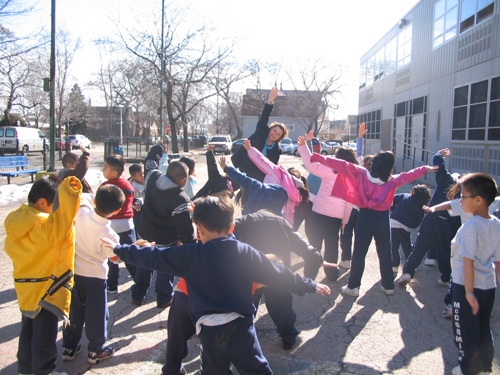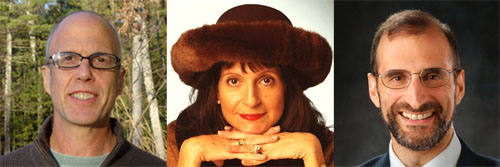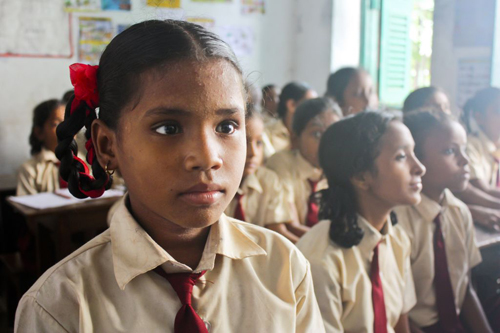
Student health problems illustrate a compelling but generally neglected influence on the US domestic achievement gap, according to Dr. Charles (Chuck) Basch, author of Healthier Students Are Better Learners. In Basch’s study he concludes that health issues, which disproportionately plague low-income urban minority youth, play a major role in limiting their motivation and ability to learn.
Basch further believes that intervention would improve both educational and health outcomes. Currently there is no national American school mission or Department of Education initiative to reduce health disparities as part of a strategy to close our domestic achievement gap.
Dr. Howell Wechsler is Director, Division of Adolescent and School Health (DASH), Centers for Disease Control and Prevention (CDC). Wechsler’s work with DASH earned him the Milton J. E. Senn Award in 2006 from the American Academy of Pediatrics for achievement in the field of school health. In 2012, he was also awarded the American School Health Association’s highest honor, the William A. Howe Award.
Dr. Charles (Chuck) E. Basch is the Richard March Hoe Professor of Health Education at Teachers College, Columbia University. Chuck has provided consultation related to implementing Healthier Students Are Better Learners to state departments of education in Connecticut, Tennessee and Colorado, as well as to public school systems in Chicago, Boston, and Denver.

I worked on education initiatives in Africa and understand the important connection between healthcare and successful learning outcomes. First you must have healthy students. Then you can educate them — do we think like that here?
Howell: What I find fascinating is that when people who work on school health promotion across the world get together, we learn that things are not really all that different. It is perhaps a little more challenging in the United States because local control of education is so strong here. There are so many different places that you have to influence to get practices to change. We don’t do a very good job of getting people to think of the needs of the whole child. We train people in education. We train people in public health. But what is really needed here is a bridge or a mix between the two. That’s not something people do easily.
What health issues affecting learning have you identified in students and what percentage can be found in low income homes?
Chuck: I identified seven. Poor vision, poorly controlled Asthma, aggression and violence, physical inactivity, skipping breakfast and ADHD. These are not necessarily the ones that will be the most important in every locality, but they warrant consideration. Also, while not specifically mentioned, mental and emotional health should be a pervasive underlying theme of any high quality school health initiative. Each of these 7 problems affects or is affected by mental and emotional health. Further, each of these problems has high prevalence and disproportionately affects low-income, urban minority youth that is the same group greatly affected by the academic achievement gap.

If we could combat the health issues you’ve identified, how far could we go towards narrowing our domestic achievement gap?
Chuck: It is difficult to say exactly since a well-conceived effort has never been tried. But there is evidence that very substantive effect sizes can be achieved. Addressing these problems is not a panacea. We need effective teachers, high quality curriculum, standards and assessments, and data systems to track and provide feedback about where progress is and is not being made. But no matter how well these school reforms are implemented, if students are not motivated and able to learn, the educational benefits of all of these efforts will be jeopardized. Highly prevalent, specific health problems have powerful effects on students’ motivation and ability to learn, and have not been addressed well in our nation’s schools.
Health problems can be profound barriers to learning, but is it the job of schools to provide healthcare services?
Howell: Most schools provide some kind of healthcare services to children through the presence of a school nurse; many link students and their families to community-based healthcare providers; and approximately 2,000 schools in the US have school-based health centers to provide at least some critically needed healthcare services to students on campuses.
Chuck: Schools should not be the social institution that is solely or even predominantly responsible for providing healthcare services to youth. But given that schools are the social institution where youth are on a daily basis, they are ideally suited to provide such services, and are in a strong position to provide healthcare services to youth with great needs who are at high risk of not receiving needed services. This is, of course, a value-laden question that does not have a “right” answer. There are many expectations on schools in addition to their primary goal — educating youth.
Although opinions may vary on what schools should or should not direct attention to, the reality is that certain health problems/issues pose powerful barriers to teaching and learning. These problems have persisted for decades and disproportionately affect low-income, urban minority youth. Education leaders and policy makers have not established strategic, high quality, and well-coordinated policies and programs to address these health needs and until we do, the benefits of other school reform efforts will be jeopardized.

If not the job of schools, whose job is health?
Chuck: Providing healthcare and, more importantly, promoting wellness and quality of life is not the responsibility of any single social institution. Families, communities, healthcare institutions, faith-based organizations, categorical organizations, governmental agencies, foundations and philanthropists, and yes, schools, all have an important role to play. And the problems are so large and so challenging among low-income youth that it will take contributions from all of these elements of our society to address these health needs in an efficient and timely way. What is currently lacking and sorely needed is coordination among the different entities investing in health promotion and disease prevention among youth.
What role should schools play in promoting healthcare?
Howell: Schools should work closely with health departments and local healthcare providers. They can facilitate the delivery of healthcare services through agreements with healthcare providers, manage it themselves, or link students and their families to community based providers. Schools also should teach students the knowledge and skills they need to effectively use healthcare services.

What national, state, and local health care reform strategies would you like to see put in place to ensure student health?
Chuck: From my perspective, the question should be a bit broader. Part of a larger problem is that the problems of health disparities, educational disparities and poverty are closely inter-related in causal ways, yet our long-standing infrastructure for addressing these problems, and the policies, programs and funding associated with them, are disconnected in silos. This situation is not only pervasive in government, but in the private sector as well – see for example the Gates Foundation – educational investments are focused domestically and public health investments are focused globally. This is not, from my perspective, a good way to invest social resources to help youth facing many educational and health challenges simultaneously. To break out of a cycle of poverty, which is characterized by intergenerational high risk for educational failure, health problems, and low chances for upward social mobility, these inter-related problems must be addressed through inter-related solutions.
What positive healthcare initiatives have you seen around the country that might inspire more focus on healthcare if we had more funding for low-income schools?
Howell: Well, there was a big increase a few years ago in funding for school based health centers and I think from a public health and education perspective that is a positive development. However, the number of schools that have health centers still remains a small fraction of what the need is. There are a lot of efforts underway to develop linkages between schools and community health centers and other community healthcare providers knowing that sometimes it is just too challenging (there are economic barriers at times) to actually open clinics on school sites. So there are efforts to build awareness for services that are available in the community and make them more accessible to students.

Imagine you had the job of advocating for better healthcare for poor students. How would you pitch it?
Howell: There are multiple ways to go. First of all, the data and the evidence are growing and that would be important to stress. There is also a very strong common sense argument that obviously young people cannot achieve if they are burdened by health problems.
We are starting to make progress in expanding the evidence base. For many years, when people went into schools and did an education intervention, they only looked at education outcomes and not health outcomes. People who were doing public health interventions in the schools just looked at the health outcomes but did not consider the education results. So that’s one of the main reasons it has taken so long for us to build a body of evidence.
Even though CDC is a public health agency, we also fund education agencies. Most of the funding we give out goes to health departments but my division funds education agencies. In our core programs, for many years we have required the education agencies that we fund to collaborate with health departments. So if you were a state education agency and you wanted funding, it had to be a partnership between the health and the education department and the resources had to be shared.
It was a fascinating exercise trying to bridge these two worlds. We actually found that public health people were fairly ignorant about how to influence schools — and schools were not always clear on how to work with health departments — so we commissioned the National Association of State Boards of Education to write a manual and develop a training program called “How Schools Work and How to Work with Schools.” After that we commissioned a public health organization called the National Association of Chronic Disease Directors to do the sequel, which was “How Health Departments Work and How to Work with Health Departments.”
Getting people to cross sectors is a huge problem in this country. People need to look past the test scores or the easy and obvious solutions to dig down and look at the root causes that are really impeding academic achievement.

Photos courtesy of Healthy Schools Campaign.
Healthy Schools Campaign: For more information
For more articles in the Health and Education series: Click here
In The Global Search for Education, join me and globally renowned thought leaders including Sir Michael Barber (UK), Dr. Michael Block (U.S.), Dr. Leon Botstein (U.S.), Professor Clay Christensen (U.S.), Dr. Linda Darling-Hammond (U.S.), Dr. Madhav Chavan (India), Professor Michael Fullan (Canada), Professor Howard Gardner (U.S.), Professor Andy Hargreaves (U.S.), Professor Yvonne Hellman (The Netherlands), Professor Kristin Helstad (Norway), Jean Hendrickson (U.S.), Professor Rose Hipkins (New Zealand), Professor Cornelia Hoogland (Canada), Honourable Jeff Johnson (Canada), Mme. Chantal Kaufmann (Belgium), Dr. Eija Kauppinen (Finland), State Secretary Tapio Kosunen (Finland), Professor Dominique Lafontaine (Belgium), Professor Hugh Lauder (UK), Professor Ben Levin (Canada), Lord Ken Macdonald (UK), Professor Barry McGaw (Australia), Shiv Nadar (India), Professor R. Natarajan (India), Dr. Pak Tee Ng (Singapore), Dr. Denise Pope (US), Sridhar Rajagopalan (India), Dr. Diane Ravitch (U.S.), Richard Wilson Riley (U.S.), Sir Ken Robinson (UK), Professor Pasi Sahlberg (Finland), Andreas Schleicher (PISA, OECD), Dr. Anthony Seldon (UK), Dr. David Shaffer (U.S.), Dr. Kirsten Sivesind (Norway), Chancellor Stephen Spahn (U.S.), Yves Theze (Lycee Francais U.S.), Professor Charles Ungerleider (Canada), Professor Tony Wagner (U.S.), Sir David Watson (UK), Professor Dylan Wiliam (UK), Dr. Mark Wormald (UK), Professor Theo Wubbels (The Netherlands), Professor Michael Young (UK), and Professor Minxuan Zhang (China) as they explore the big picture education questions that all nations face today. The Global Search for Education Community Page
C. M. Rubin is the author of two widely read online series for which she received a 2011 Upton Sinclair award, “The Global Search for Education” and “How Will We Read?” She is also the author of three bestselling books, including The Real Alice in Wonderland.
Follow C. M. Rubin on Twitter: www.twitter.com/@cmrubinworld






Recent Comments